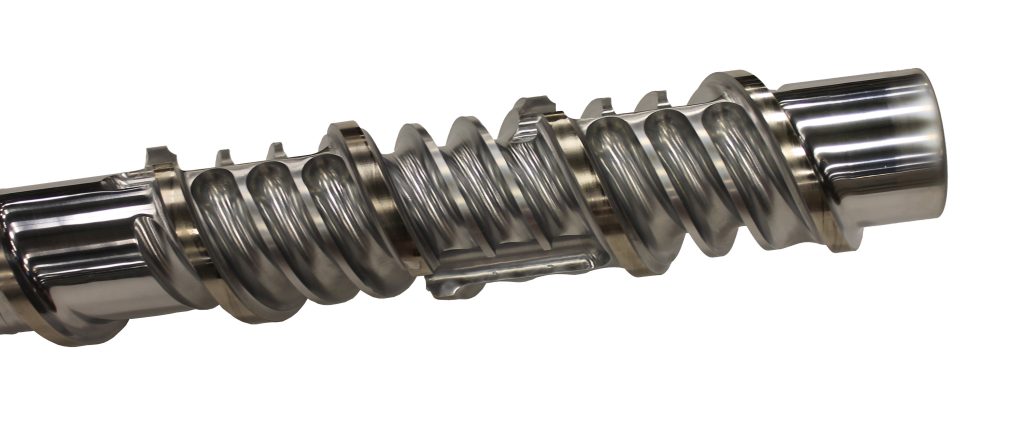Achieving processing goals, product quality and avoiding unexpected equipment shutdowns are...
The “911” for Feedscrew Removal
Your feedscrew is stuck…now what? Never fear! First thing’s first, follow the instructions in your extruder manual. Secondly, we recommend using a feedscrew jack to safely aid in this process. This jack employs a long, grooved bar between two hydraulic cylinders actuated by a lever or via push-button operation. A latch engages and pushes the bar forward the distance between the grooves. The latch is then retracted until it picks up the next groove (the above picture is a different model that uses a single-cylinder; however, the procedure is the same).
To give you an idea of what to expect, here are 10-steps applicable to feedscrew removal for most Davis-Standard extruders using a feedscrew jack (please remember the machine must be at operating temperatures for the below procedure).
(1) Shut down the extruder. Shut off water and remove the rotary union and cooling pipe assemblies from the feedscrew. Be sure any pressure is relieved.
(2) Loosen the head clamp and swing or lift the head free of the barrel flange.
(3) Remove the breaker plate, screen pack, etc.
(4) Insert a push rod in the bore of the thrust shaft and against the feedscrew end.
(5) Place the jack bracket in the groove of the thrust shaft and above the two supporting lugs on the rear face of the bearing retainer. These lugs prevent rotation of the jack bracket.
(6) Using the pump handle, increase the jack pressure. This puts pressure on the feedscrew through the pushrod and forces the feedscrew forward and out of the keyways.
(7) Turn the knob to release pressure in the pump. Insert additional spacers between the piston rod of the jack and the pushrod to get more sliding movement of the feedscrew.
(8) Carefully withdraw the feedscrew from the barrel. Using a wire brush, clean the flights, channels, and mixing pins or grooves as the feedscrew is being withdrawn. Make certain not to drop the feedscrew as the shoulder of the feedscrew clears the barrel.
(9) Remove spacers, jack assembly, and push rod from the extruder. The pushrod may be pushed through the delivery end of the barrel.
(10) Place the feedscrew on a wooden bench or V-blocks and thoroughly clean and inspect. Refer to the instruction manual for details.
When installing or removing the feedscrew, be careful not to let the feedscrew drop as the shank diameter changes. This will nick or damage the breaker plate recess, and typically causes irreparable damage. Protect the sealing face by machining a simple ring and inserting that ring into the recess before pulling the screw. Make the ring 0.01 inch (0.25mm) greater than the nominal barrel inside diameter, approximately 0.005 inch (0.13mm) less than the breaker plate recess inside diameter and 1.5 times the thickness of the breaker plate.
In the next blog, we will post about four alternative feedscrew removal procedures used in unique situations.
For additional questions about this or any other feedscrew maintenance topic, please contact marketing@davis-standard.com.


